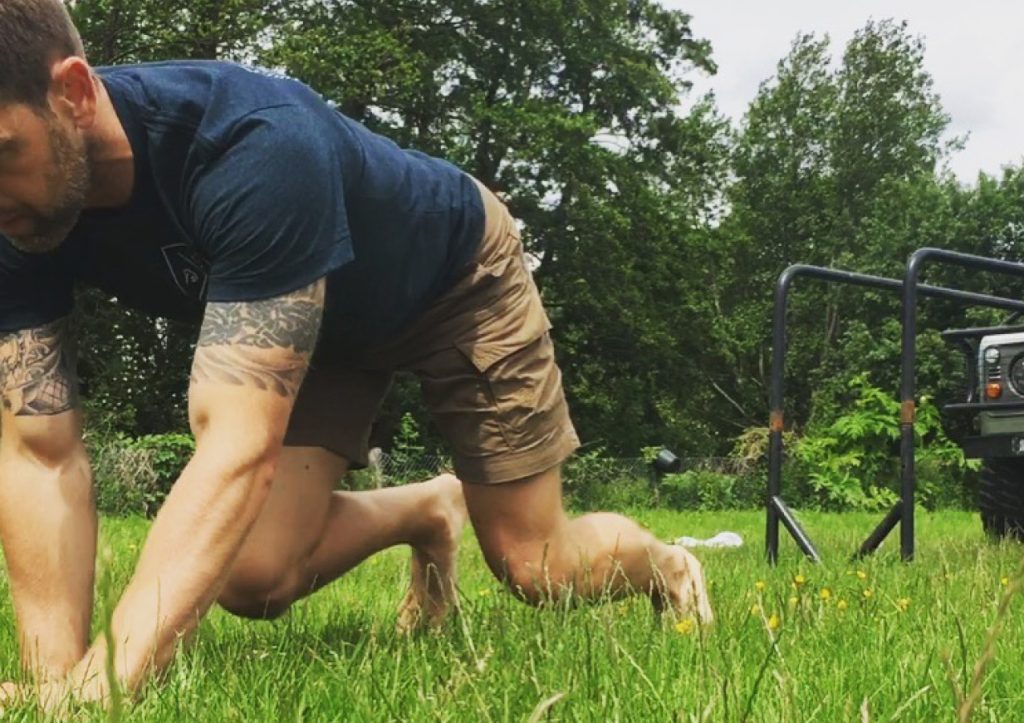Nine years have passed since I wrote my first article for The Circuit magazine and it’s been interesting to see how the security Industry has evolved, both good and bad.
From a physical training perspective, the evolution of my own personal practice, my approach to nutrition and what I advise for the general population has dramatically changed over these years. A combination of research, trial and error, ego and being fit for purpose are some of the determining factors that have caused the shift in mindset.
There should be no doubt that security personnel in all roles should be fit for purpose, but what does that actually mean and how can it be implemented? In my opinion it is role dependent and should incorporate health and wellbeing as the major factor with performance based fitness making up a very small part, if at all.
Some of the key causes of poor work performance and sick days are due to the high amount of stress, bad diet and underlying health problems that plague modern day living. It is the responsibility of the individual to address these issues and make better choices, but employers also have a duty of care to put things in place to assist and facilitate the employees. It’s a win win situation as there would be less sick days taken, improved productivity and a mutual appreciation between employer and employee.
Contrastingly, many of us in the Industry are contractors and we know that situations and circumstances are going to be far from ideal, so the self-discipline we possess along with the choices we make are even more important.
Physical Training
I will outline what I have learnt from on the ground research and experiences that have formed my approach to training and practice. I have taken a broad approach and deliberately avoided going too deep in detail enabling you to explore subjects that are of interest to implement into your lifestyle and current training programme
Fitness Vs Health – As I stated in the first paragraph, the way I look at physical culture has dramatically changed; age and injuries have dictated that I adapt or die, metaphorically speaking. The question to always ask yourself is what am I actually training for? It is important to be honest and use the answers to formulate a training programme or general approach to movement practice. We live in a social media driven society and often do things through subconscious conditioning, as opposed to what would benefit us as individuals and positively effect our health and wellbeing. Most of us experience a fair amount of stress in our life and this in turn causes inflammation which can manifest itself in illness. Work, family and financial stressors can take their toll, so any training we do should be to improve our body and mind, not break them down further. As I have written in past articles, GPP or general physical preparedness is what I recommend; be a generalist not a specialist and adopt exercise strategies that will encourage longevity over short-term performance. Address the keys to longevity: cardio respiratory fitness, balance, reaction speed, mobility and muscular strength.
Mobility v Flexibility – It is commonly thought that when we mention mobility and flexibility, we are talking about the same thing. They’re not and it is important that you know the difference between the two:
Flexibility refers to “ The ability of the soft tissues (muscles) to stretch passively through a range of motion (ROM)”. Whereas Mobility is the “ability of a joint to move actively through a ROM”.
In short, your muscles will only stretch as far as the joint and joint capsule allow. Factors that effect mobility and limit it are: generally poor posture, desk work, sitting, lack of muscular strength and injuries (past and present). We become good at what we do most of the time; if we sit in a bad posture for long periods at work or home then we inevitably become an expert in that. Our ROM will gradually decrease, shortening the muscles over time and effectively being dragged into an even worse posture, a vicious cycle. It’s not all doom and gloom though, ROM can be improved with persistence and a change in mindset. Consciously getting up and mobilising the joints in between bouts of sitting (RST a classic example) and developing a mobility routine that suits individual anatomy and restrictions. Youtube has a huge amount of worthwhile and user friendly content, functional range conditioning (FRC) is worth exploring; Dr Andreo Spina and Dewey Nielsen specifically.
Diet
The cornerstone to health. These are a few basic principles that I employ for maximum effectiveness, especially if the food choices available are out of my control or not ideal.
Nutrients and Calories – The general conditioning is to look at everything as macro-nutrients in food, namely: protein, carbohydrates and fat. Whilst it is important to differentiate between the three and understand what foods contain what predominantly, the main focus should be on what micro-nutrients the foods contain. The purpose of eating is to fuel the body (macro-nutrients), but more importantly to repair it (micro-nutrients). When we talk about micro-nutrients, these are the vitamins and minerals that food contain. This is one of the reasons that processed food is bad for the body. The more you process it, the less nutrient dense it becomes and the less dietary fibre it contains; this is why many foods need to be fortified with vitamins and minerals. A general rule of thumb is to eat whole foods where possible and fill the majority of the plate with non starchy vegetables (this is where most of the micro-nutrients will be found).
Intermittent fasting – This has increased in popularity of late and made far more complicated than it actually is. I started IF in 2013 after reading “why does breakfast make me hungry” by Martin Berkhan of leangains.com . When I ate breakfast soon after waking I found that very quickly I would feel hungry again and tired. The basic principles are that increasing the fasting period will allow the body to process all the food and get on with regenerating the cells throughout the body. By eating early and grazing all day, the organs spend all day processing food, add to that: high intensity exercise, stressful work and limited sleep and it’s no wonder we don’t operate optimally. There are different methods with fasting, but the one that works best for me is the 16/8 (16 hours no food, 8 hour eating window). It’s as simple as it sounds e.g. I have my last meal finished by 8pm then my next meal would be at 12pm the following day, effectively when I “break-fast”. When I have suggested this method to people I coach or people I’ve worked with in the industry, the first reaction is “no way can i go that long without food”. It is true, the first week or two of adjustment can be difficult, but the feeling of hunger soon subsides and
I feel far more energised having not eaten, as strange as it sounds. The feeling of training on an empty stomach is also a good one, lighter and sharper in general and personally I have experienced no slumps when doing strength or endurance before my first meal. If we eat nutrient dense food later in the evening, the muscles and liver will be full of glycogen, our muscles will have protein doing its replenishing and the fats will be repairing. If we go to sleep a couple of hours later, why do we need to put food straight back into our body on waking? The glycogen won’t have been used and the muscles won’t require protein. Like all things with nutrition, this won’t be an effective method for everyone, but fasting has been proven to be an effective way to lose weight, improve body composition and improve energy levels. But don’t take my word for it, do some more research and give it a fair go.
Travel and working away – I know from experience how difficult it is to adhere to point number one, especially when working away in hostile areas. The meat is often of questionable quality (this is also the case in western supermarkets!), the vegetables have usually been boiled to the point that there are no nutrients left and there is an abundance of sugar based food and drinks. This is where we need to think about making careful choices and bringing supplements if possible. Personally I steer clear of animal based protein powders and go for a Hemp powder supplemented with other micro-nutrients. To get dietary fibre I would bring some ground flax seed, this would keep the intestinal tract healthy and provide some roughage.
A greens powder is a welcome addition, dehydrated and powdered leafy vegetables will provide the vital micro-nutrients, at least until there are good veg choices available. These could all be combined and mixed proportionately if the luggage space is limited and makes it easier to prepare if time is short. Pre mix in a water bottle prior to going on the ground and drink it as and when or just have it once a day when the task is finished. If the role is arduous and burns a lot of calories, it may be worth bringing a ground carbohydrate mix that can be added to make a complete, easily digestible meal replacement e.g ground barley or oats. I would advise keeping it separate if you are going to pre mix the protein, flax and greens; this will allow you to control the calorie content. A great source for supplements that I have used for many years is revolution-foods.com
Try addressing these areas at whatever level you feel works for you as an individual. Some people will be rigid and jump straight in, doing it all by the letter. Others will integrate parts, discount others, find their own unique alternatives, have cheat days, drift in and out etc etc. Both approaches are a positive step in the right direction but it’s important to make yourself accountable for the changes you want to make. Write down (pen and paper, old school) your: intentions, why you are doing it and what you want to achieve. Refer to it when you need some motivation, a reminder of why you are doing it or to consolidate, review and adjust the approach.
Fit for Purpose
By: Ryan Naish
Ryan is a former Physical training instructor in The Parachute Regiment, Movement and outdoor skills coach and still active within the security industry. He has developed a lifestyle system called “The Primal Pathway” and delivers seminars, workshops and classes to a wide demographic.
Website: www.PrimalPathway.life
Email: move@PrimalPathway.life



Leave a Reply